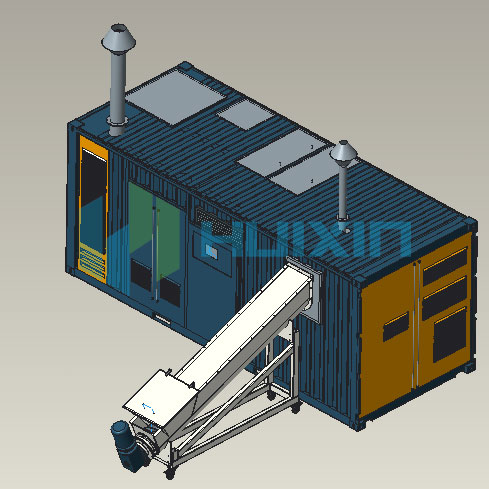Safeguarding the Environment: How Industrial Waste Incinerators Handle Hazardous Waste Materials
2024-03-05
In the realm of waste management, hazardous waste poses unique challenges due to its potential to harm human health and the environment. Industrial waste incinerators serve as critical facilities equipped to handle hazardous waste materials safely and effectively. In this blog, we'll delve into the intricate processes and mechanisms by which industrial waste incinerators manage hazardous waste, ensuring proper treatment and disposal while minimizing environmental risks.
Introduction to Hazardous Waste Management
Hazardous waste encompasses a wide range of materials that exhibit characteristics such as toxicity, flammability, corrosivity, or reactivity. Proper management of hazardous waste is essential to prevent contamination of soil, water, and air, as well as to protect public health and safety. Industrial waste incinerators play a key role in this process by providing a controlled environment for the thermal treatment of hazardous waste materials.
How Industrial Waste Incinerators Handle Hazardous Waste
1. Segregation and Handling: Hazardous waste materials are carefully segregated and handled to prevent accidental spills or releases. Strict protocols are followed to ensure the safe transportation and storage of hazardous waste within the facility.
2. Preparation for Incineration: Before entering the incinerator, hazardous waste undergoes preparation processes such as shredding or compacting to facilitate uniform combustion and efficient energy recovery. Some waste materials may also require pretreatment to reduce their volume or mitigate hazards.
3. Controlled Combustion: Hazardous waste is introduced into the primary combustion chamber of the incinerator, where it is subjected to high temperatures ranging from 800°C to 1200°C (1472°F to 2192°F). During combustion, organic compounds are oxidized, and hazardous substances are destroyed or converted into less harmful forms.
4. Emission Control Systems: Industrial waste incinerators are equipped with advanced air pollution control systems to capture and treat emissions generated during combustion. These systems may include electrostatic precipitators, scrubbers, and selective catalytic reduction units to remove particulate matter, acidic gases, and other pollutants before they are released into the atmosphere.
5. Ash Management: After combustion, the remaining solid residues, known as ash, are collected and treated to remove any hazardous materials. Ash may undergo further processing, such as stabilization or encapsulation, to minimize leaching of contaminants and ensure safe disposal.
6. Monitoring and Compliance: Industrial waste incinerators are subject to stringent regulatory requirements governing the management of hazardous waste and air emissions. Continuous monitoring systems and regular inspections are conducted to ensure compliance with environmental regulations and safety standards.
Conclusion
In conclusion, industrial waste incinerators play a critical role in managing hazardous waste materials, providing a safe and environmentally sound solution for their treatment and disposal. By subjecting hazardous waste to controlled combustion at high temperatures, industrial waste incinerators minimize environmental risks, reduce waste volume, and recover energy for beneficial use. However, it's essential to implement rigorous safety measures and adhere to strict regulatory requirements to ensure the proper handling and incineration of hazardous waste. As technologies continue to advance, industrial waste incinerators will remain integral components of sustainable waste management strategies, safeguarding the environment and protecting public health for generations to come.



